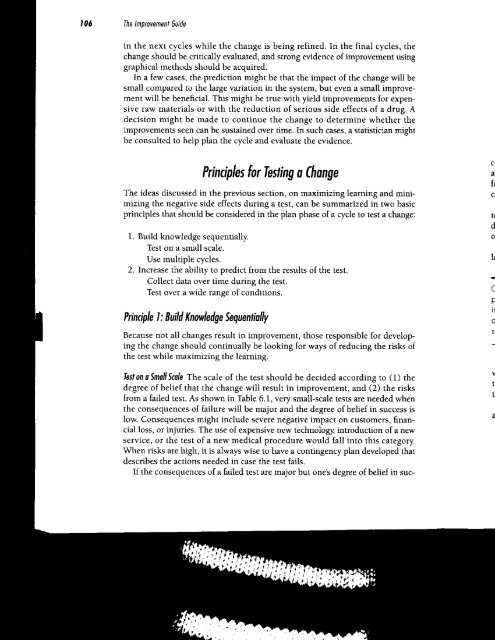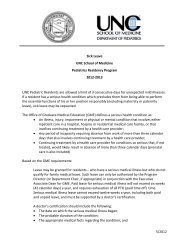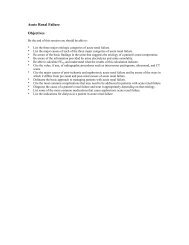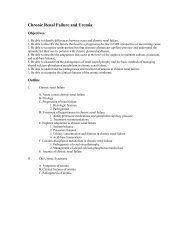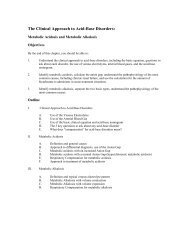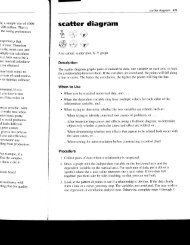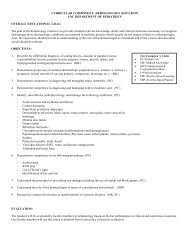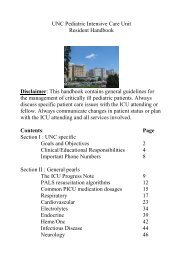Chapter 6
Chapter 6
Chapter 6
- No tags were found...
Create successful ePaper yourself
Turn your PDF publications into a flip-book with our unique Google optimized e-Paper software.
105 The lnprcvenent Guidein the next cycles while the change is being refined. In the final cycles, thechange should be critically evaluated, and strong evidence of improvement usinggraphical methods should be acquired.ln a few cases, the prediction might be that the impact of the change will besmall compared to the large variation in the system, but even a small improvementwill be beneficial. This might be true with yield improvements for expensiveraw materials or with the reduction of serious side effects of a drug. Adecision might be made to continue the change to determine whether theimprovements seen can be sustained over time. In such cases, a statistici.an mightbe consulted to help plan the cycie and evaluate the evidence.Principles for Testing o ChongeThe ideas discussed in the previous section, on maximizing learning and minimizingthe negative side effects during a test, can be summarized in two basicprinciples that should be considered in the plan phase of a cycle to test a change:l. Build knowledge sequentiallyTest on a small scale.Use multiple cycles.Increase the ability to predict from the results of the test.Collect data over time during the test.Test over a wide range of conditions.Principle l: Build Knowledge SequentiallyBecause not all changes result in improvement, those responsible for developingthe change should continually be looking for ways of reducing the risks ofthe test while maximizing the learning.fesl on o Snollkole The scale of the test should be decided according ro ( l) thedegree ofbelief that the change will result in improvement, and (2) the risksfrom a failed test. As shown ln Table 6.1, very small-scale rests are needed whenthe consequences of failure will be major and the degree of beiief in success islow Consequences might include severe negative impact on customers, financialloss, or injuries. The use of expensive new technology introduction of a newservice, or the test of a new medical procedure would fall into this category.When risks are high, it is always wise to have a contingency plan developed thatdescribes the actions needed in case the test falls.If the consequences of a failed test are major but one's degree of belief in succf:tldo;pirc5tT


